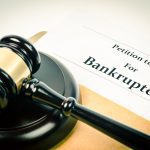Bankruptcy is an official process through which individuals or other entities that cannot pay their debts to lenders can seek relief from partial or total liquidation of their assets. In many jurisdictions, bankruptcy is legally imposed by a judge order, usually initiated by the defaulting debtor. It requires an action by the plaintiff to file the petition with the court and serve it on the defendant. If the request is not filed on time, the plaintiff cannot proceed with the suit.
The basic outline of the process remains the same in both chapters; the plaintiff must file a petition with the court. The case can be filed under either chapter 13 or chapter 7. Under chapter 13, most of the action in a bankruptcy proceeding takes place in the bankruptcy court.
Chapter 7 brings the action to the trial court:
- In a chapter 7 bankruptcy filing, most of the paperwork is done at the office of the bankruptcy judge.
- For more specific information, one must visit the county office.
- Most of the required paperwork for filing a bankruptcy can be fulfilled online.
- If there are questions about a particular area, most counties have free guides or services available to answer questions.
After filing for bankruptcy; most of the debts of the defendant do not disappear. Instead, they become new contracts, called debt agreements. Debts become debts again only if the agreement is not recorded. The trustee will then attempt to collect the debt from the individual or entity. A chapter 13 bankruptcy filing can also include instructions to the trustee not to pursue certain debts, such as tax debts, until the case has been settled.
There are some debts that cannot be settled; Debt under chapter 13 bankruptcy stays with the lender forever, regardless of the settlement. Debts that can be settled include medical bills and student loans. Most people in financial trouble qualify for chapter seven. Those who file chapter seven need to show that their financial problems are beyond their control. Those who file chapter eleven need to show that the damage would probably result in bankruptcy if it were not protected.
One way to avoid a BANKRUPTCY; is to work with a credit counseling agency and create a budget and payment plan. However, those plans cannot be implemented until you have cleared your debts. The IRS states that it is not your responsibility to clear off your debts. It is up to you to protect your credit. Once you have filed for bankruptcy, you cannot reestablish any credit unless approved by the courts.




